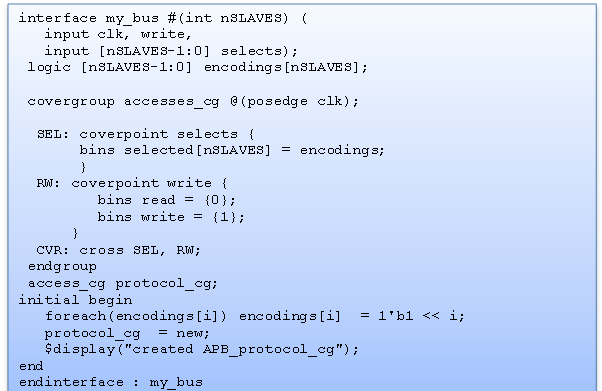Get Ready for SystemVerilog 2012
The latest revision of the IEEE 1800-2012 SystemVerilog Language Reference Manual (LRM) is about to hit the press; though I doubt people will be printing the 1300+ pages on their own from the soon to be readily available online version. Here’s a little background into what’s in all those pages.
The first SystemVerilog LRM came from Accellera in 2002 as a set of extensions to the IEEE 1364-2001 LRM. This first LRM was called version 3.0 because it was considered the third generation of Verilog. Accellera released a few more versions and turned version 3.1a over to the IEEE in 2004. The IEEE released the 1800-2005 SystemVerilog LRM as a set of extensions to the 1364-2005 Verilog LRM, which became the last revision of the 1364 LRM. Four years later, the IEEE combined the SystemVerilog extensions with the Verilog LRM producing a single 1800-2009 SystemVerilog LRM.
Now, a short three years later, the SystemVerilog IEEE 1800-2012 LRM is ready having addressed 225 issues. The majority of these issues are clarifications and corrections to the existing LRM. However, a few enhancements ranging from the simple  removal of the restriction on non-blocking assignments to class members to the major addition of multiple class interface inheritance made their way into the new LRM. A number of those enhancements will undoubtedly be presented at the upcoming Design & Verification Conference.
removal of the restriction on non-blocking assignments to class members to the major addition of multiple class interface inheritance made their way into the new LRM. A number of those enhancements will undoubtedly be presented at the upcoming Design & Verification Conference.
I’d like to demonstrate two enhancements that should be of value to most verification engineers. They address two of the more commonly asked SystemVerilog questions I receive: How do I generate an array of unique values? and How to I create covergroup bins to get toggle or one-hot functional coverage?
Generating unique array of random values
Many verification scenarios require creating sets of random instructions or addresses with no repeating values, usually represented as elements in a dynamic array. Earlier versions of SystemVerilog required you to use either nested foreach loops to constrain all combinations of array elements so that they would not be equal to each other. Or else repeatedly randomize one element at a time, and then constraining the next element to not be in the list of already generated values.
The new unique constraint lets you use one statement to constrain a set of variables or array elements to have unique values. When randomized, this class generates a set of ten unique values from 0 to 15.

You can also add other non-random variables to the set of unique values which has the effect of excluding the values of those variables from the set of unique values. When randomized, this class generates a set of ten unique values excluding the values 0, 7 and 15.

Complex coverpoint bin expressions
The previous SystemVerilog syntax for specifying functional coverage bins was very limiting. Unless you could explicitly state the individual bin values or range of bin values in your coverpoint definition, or could figure out a way to instantiate multiple copies of your covergroup passing in a different bin value as an argument, you were out of luck. This also made defining coverage crosses extremely difficult.
The new SystemVerilog bin syntax lets you specify a bin expression that is evaluated over the range of possible values of the coverpoint expression. The bin expression acts like a constraint, and the set of coverpoint values where the bin expression is true become the set of bins. The coverpoint below generates as set of bin values between 0 and 127 that are divisible by 3. The range is 0 to 127 because sbyte is a 7 bit variable.

Probably the most powerful feature is the coverpoint bin set that simply allows you to define an array of values that you want as bins. This is useful for specifying one-hot encodings, toggle coverage of a register, or any complex algorithm that can generate the set of bin values you want. The code below builds a list of onehot values in the encodings array, and then constructs the protocol_cg covergroup using the array as a set of bin values.

Available in the latest version of Questa
By the way, every feature discussed in this post is available in the latest version of Questa, 10.2.
Comments
Leave a Reply
You must be logged in to post a comment.



i have 2 random number a & b , a is 8 bit and the b is 2 bits.i want to generate values of a and b such that a[1:0] and b has unique values.
Can you help me in this
Syntax is incorrect for bins-with
covergroup cg;
csomeLabel: coverpoint CG_item {
bins CG[] = {[0:100]} with (item % 5 == 0);
}
endgroup